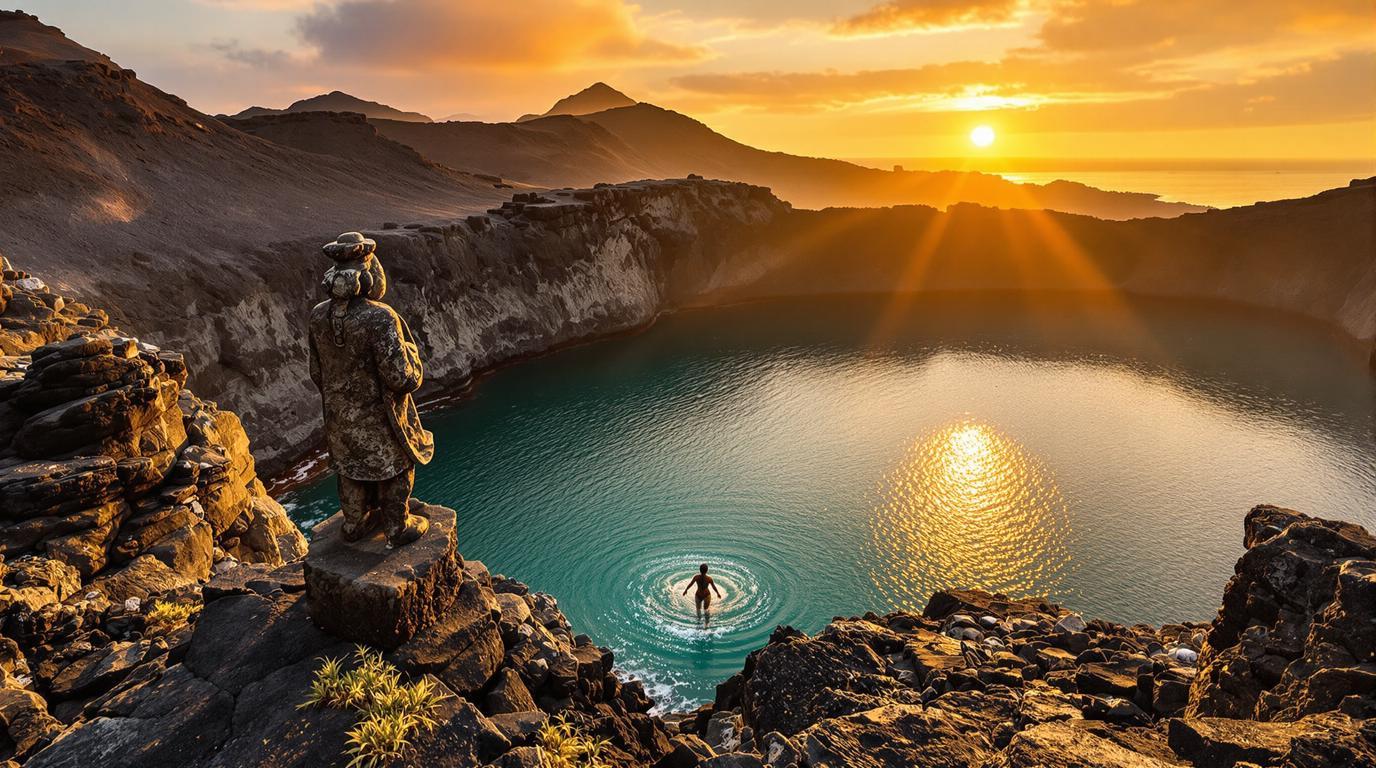Jeju Island might be South Korea’s best-kept secret – a volcanic wonderland where emerald forests meet sapphire seas under the watchful eye of an ancient volcano. While K-drama fans may recognize its dramatic landscapes, this UNESCO triple-crowned island remains refreshingly authentic despite growing international attention.
A volcanic paradise born from fire
Rising dramatically from the Korea Strait, Jeju Island was formed through volcanic eruptions nearly 2 million years ago. At its heart stands majestic Mount Hallasan, South Korea’s highest peak at 1,950 meters. Unlike the mainland’s jagged mountains, Hallasan’s gentle slopes hide over 360 parasitic volcanic cones, creating an otherworldly terrain that has earned comparisons to other volcanic islands around the world.
“Jeju isn’t just an island – it’s a living geological museum where you can touch lava that flowed thousands of years ago,” explains Dr. Kim Min-ho, a volcanologist who studies the island’s unique formations.
Underground worlds: The hidden lava tubes
Perhaps Jeju’s most astonishing feature lies beneath your feet. Manjanggul Cave, part of a massive lava tube system, stretches for over 7 miles underground. Walking through its cavernous passages, illuminated only by soft lighting that highlights bizarre formations, visitors experience the island’s fiery birth story firsthand. The cave’s “Stone Turtle” formation, resembling Jeju Island itself, has become an unofficial mascot.
The women who whistle at the sea
Jeju’s most remarkable cultural treasure isn’t a building or artifact – it’s the haenyeo, or “sea women.” These legendary female divers, many now in their 70s and 80s, plunge into frigid waters without breathing equipment to harvest seafood. Their distinctive whistling sound, made when surfacing to breathe, has earned them UNESCO Cultural Heritage status.
“We don’t dive for tourists – we dive because the sea is our life,” says 73-year-old Song Mi-ja, a haenyeo with over six decades of diving experience. “But we welcome visitors who respect our traditions.”
Sunrise peak: Nature’s perfect amphitheater
Seongsan Ilchulbong, or “Sunrise Peak,” rises 182 meters from the eastern coastline, its perfect crater resembling a massive coliseum built by giants. Hiking to its summit for sunrise has become a pilgrimage for visitors seeking what locals call “nature’s most perfect moment” – when golden light first touches the crater’s edge before spilling across the surrounding ocean, rivaling even Iceland’s most dramatic natural phenomena.
Mysterious stone guardians
Throughout Jeju, thousands of “dol hareubang” – carved stone grandfather figures with bulging eyes and prominent noses – stand sentinel. Originally placed to ward off evil spirits, these volcanic rock statues have guarded the island for centuries. Local tradition holds that rubbing a hareubang’s nose brings fertility and good fortune.
Black sand and blue waters
Jeju’s beaches offer a dramatic departure from typical Korean shorelines. Hamdeok Beach’s white sand gives way to clear turquoise waters, while Jungmun Beach features rare black volcanic sand. Unlike remote Pacific islands, Jeju’s beaches remain accessible yet surprisingly uncrowded outside summer months.
A culinary landscape shaped by volcanoes
Jeju’s volcanic soil produces distinctive ingredients found nowhere else in Korea. Black pork, raised on lava-filtered groundwater, offers an unmatched depth of flavor. The island’s famous tangerines grow sweeter thanks to mineral-rich soil, while abalone harvested by haenyeo is served in hearty porridge – the ultimate island comfort food.
Like other protected island ecosystems, Jeju maintains its unique character through careful balance of tourism and preservation. Unlike mainland Korea’s hyper-modernity, Jeju moves at its own pace – one governed by tides, volcanic legacies, and traditions that have survived for generations.
“We say Jeju has three abundances – wind, stones, and women,” laughs local guide Park Ji-woo. “What we lack are thieves, beggars, and gates. Our doors remain open, just like our hearts.”
As travelers seek authentic experiences beyond well-documented wonders, Jeju Island offers a rare combination – geological marvels, living cultural traditions, and natural beauty that changes with every season. This volcanic gem, rising from azure waters, isn’t just South Korea’s Hawaii – it’s a world entirely its own.
